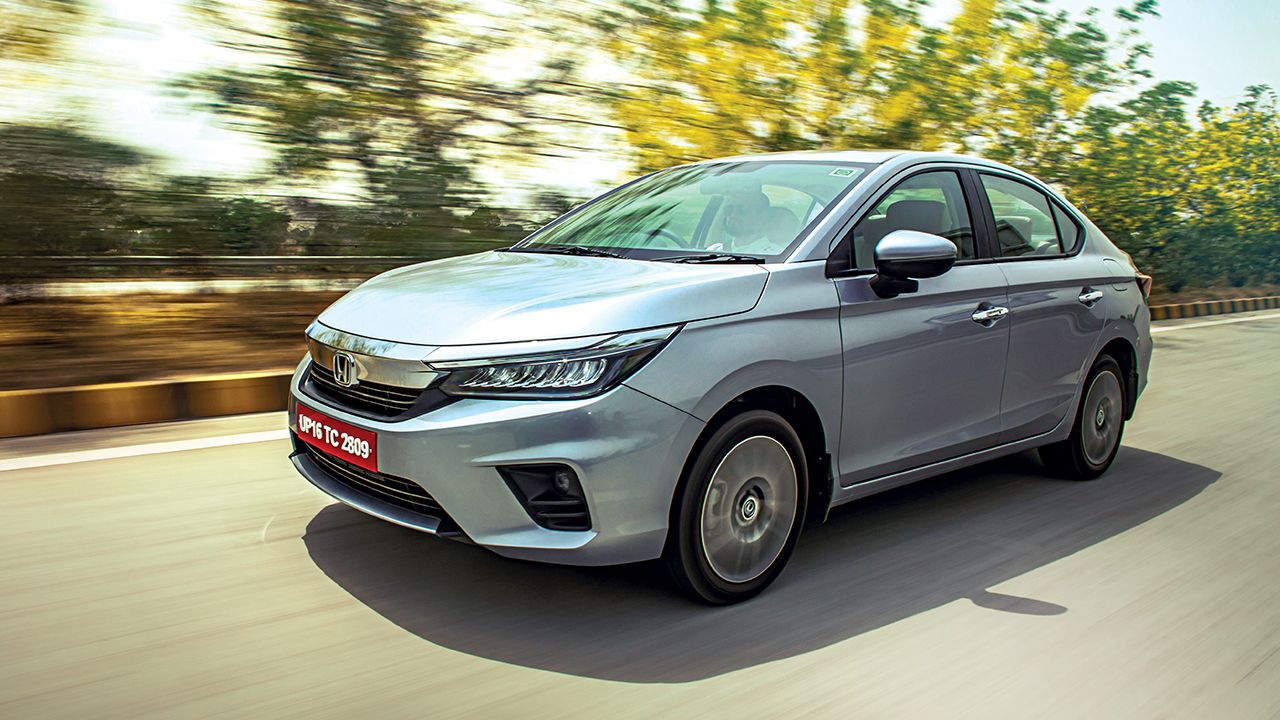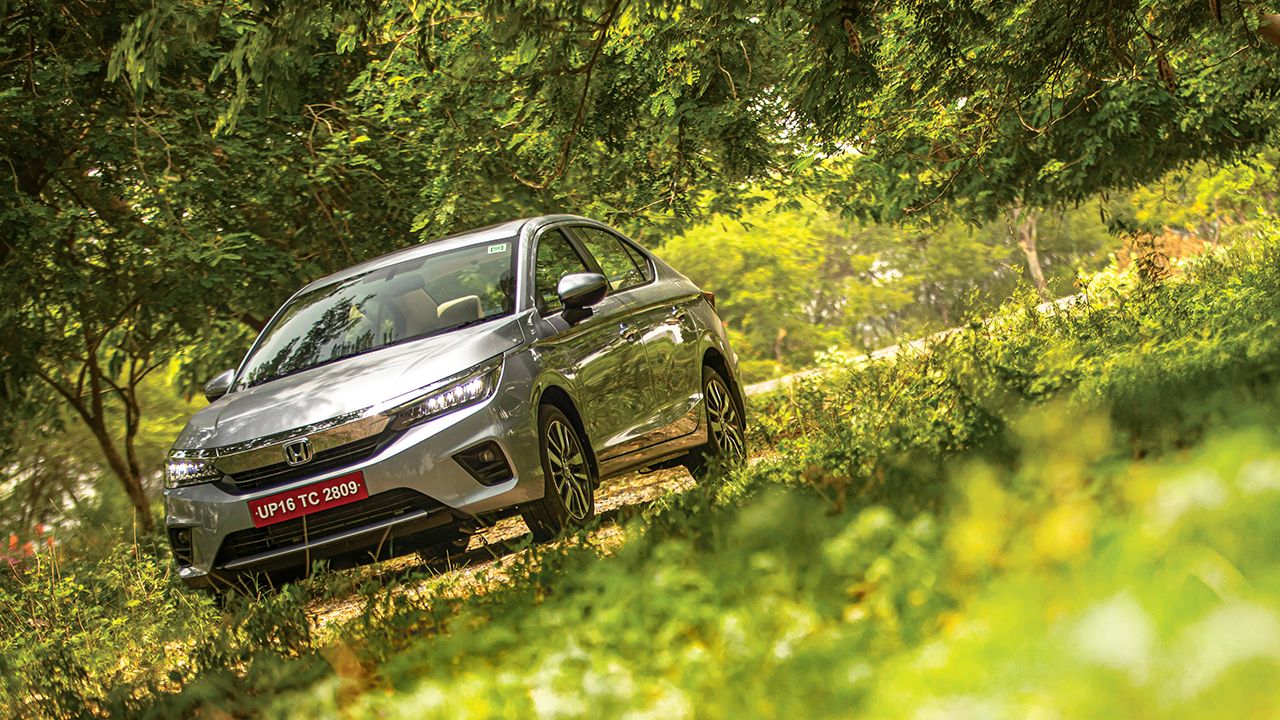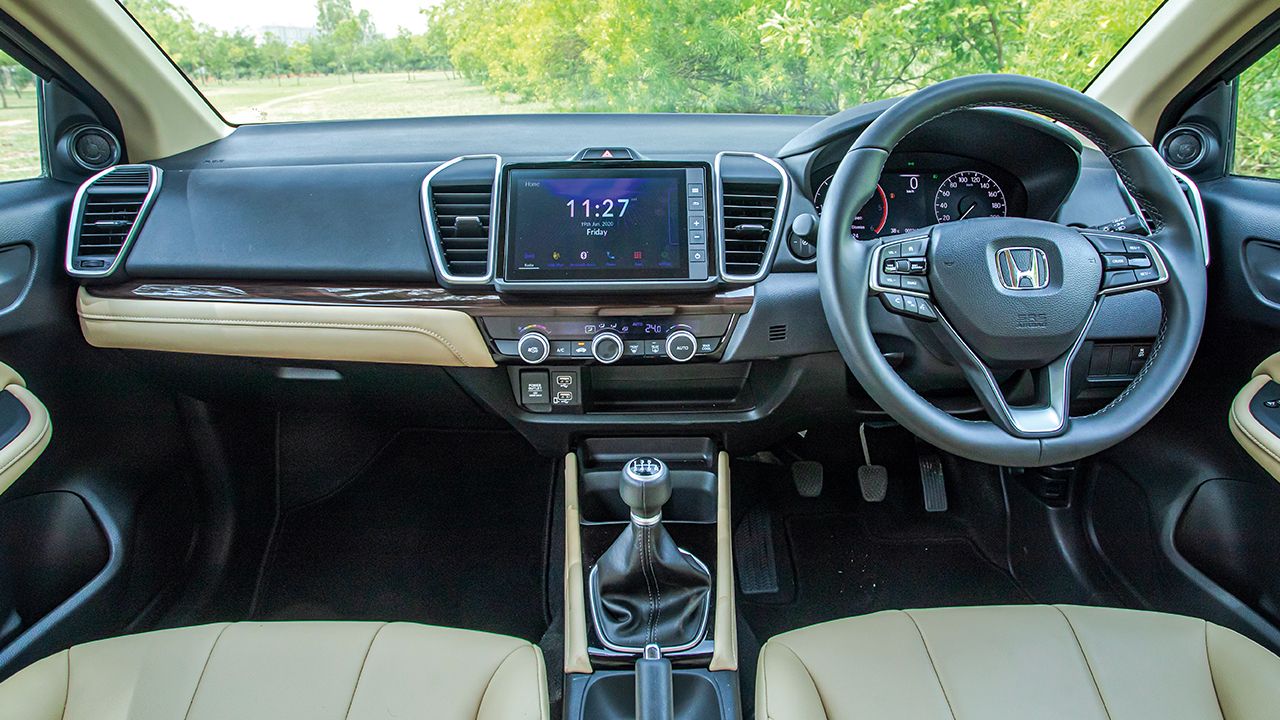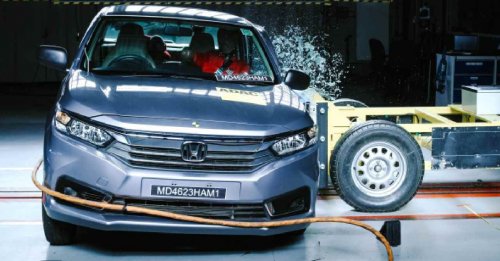The latest generation of the City is Honda’s attempt to reclaim dominance on a segment that it created over two decades ago. But, with intense competition and a fast-changing market, does the new City really stand a chance?
I distinctly remember what a big deal the Honda City was in the Indian market back in 1998. After years of Licence Raj, the Indian economy had finally opened up, and modern cars were amongst many other things that became easily accessible for the first time. The first wave started with names only some of you might remember – the Opel Astra, Daewoo Cielo and Mitsubishi Lancer. But, in terms of relatively affordable mid-size sedans, the Honda City served as the gold standard.
Beginning of a new era
The Honda City was the car that made a generation of Indian customers fall in love with automobiles. I should know – I spent my hard-earned money buying the first-gen City VTEC, just as it was about to go out of production in 2003. In fact, over the next 5 years, I drove it around as much as I could, covering a total of nearly 200,000 kilometres. So, when I say I have some experience with the City, I truly mean it.
But, for many, the City was never the complete car that the Lancer was. It had its share of flaws – the twitchy handling being one of them. But I couldn’t care less. For me, the fast-revving engine, with its 7,200rpm redline, phenomenal 5-speed manual gearbox, sublime steering, with oodles of feel, and amazing visibility from inside the car meant more than anything else. Also, I loved all the boy racer touches – the spoiler, twin exhaust pipes, and (large-for-the-time) 14-inch wheels. In my defence, I was very young.
But time went by, and we saw three 3 generations of the City after the initial machine that I’d fallen in love with. And, frankly, all three disappointed. You see, over the years, the City changed from being a driver’s delight to be a much more relaxed cruiser that appealed to a wider public. It was a smart move, but what had appealed to me in the original car was lost. Perhaps I’m critical because it was one of my first ‘dream’ cars that I owned, and people do irrational things when in love, don’t they?
Anyway, coming back to the matter at hand. Over a decade has passed since I sold my beloved VTEC, and now Honda is launching the 5th generation of the City. Being an important product – it was Honda’s first model in India, and sold over 8 lakh units in India alone – the success of the City, therefore, is critical to Honda’s future in the country. So, when we decided to test the new car, it took some rescheduling and changes of plan, given the current Coronavirus madness. But, finally, we managed to get our hands on the new City. So, how is it? Well, read on!
Fresh face
While I haven’t been a fan of Honda’s current design language – its quirkiness makes me think that the brand is trying too hard to be different – I think that the design of the new City works well to a large extent. The chrome moustache – adios grille! – is integrated quite well in this case, and, overall, with that swooping roof, the City looks quite distinctive. I found some of the detailing particularly appealing, such as the LED headlamps, which are beautifully detailed, not to mention the taillamps – which are also a highlight of the design. With a smoked, red finish and their wraparound shape, the large taillamps give the rear of the City a completely unique identity.
Now, if I had to improve on one aspect of the City, it would definitely be the stance of the car, even with those 16-inch wheels. Because of its practical 165mm of ground clearance, there’s too much gap between the wheels and the fenders, and I think that 17-inch wheels would suit the car much better.
As I stepped into the car, I found the interior particularly appealing. And, let me be frank here, I don’t really like beige, but I must admit that the beige and black dual-tone theme gives the City’s interior an airy feel. What also helps here is that the City is by far the longest car in its class, with a length of just under 4.6 metres. It means that you get class-leading levels of room inside the car. If you’re a rear-seat passenger, this is particularly appealing, as the City’s comfortable seats are a great place to spend time in.
Up front, aside from the great seats and good space, Honda’s engineers have paid special attention to enhancing visibility from the driver’s seat – a particular weakness of recent-generation cars. The increased visibility not only makes driving easier, but also enhances the sense of spaciousness. Also, it’s worth noting that the quality of the interior surfaces and fitment is brilliant – the City really feels like a high-quality product. That said, it could do with a bit more headroom in the rear seat. Given the sloping roof design, you will struggle for headroom in the rear seat if you’re above 6-feet tall.
Loaded with Tech
Of course, connectivity and technology are two important aspects of cars today, and the Honda City has taken some serious steps ahead in both. Now, you can check your City’s vitals via the Honda Connect app and start the car remotely as well, not to mention do a million other things. The City now offers Alexa integration, which is an industry first in India. This means that you can check your car’s information or turn it on & off remotely by asking Alexa to do it for you. However, while all the functions work quite well, due to current limitations of cellular technology, operating your car via the app or Alexa is not instantaneous – there is a lag of a few seconds. This is something that will improve as the technology advances and connectivity improves.
Now, we still don’t know how many trim levels of the City will be offered – that information will be revealed sometime in July. What we do know, however, is that the top trim level – the one that we drove – has an impressive equipment list. The new City comes with 6 airbags, ABS, EBD, LED headlights & taillights, an 8-inch touchscreen multimedia system, and a 7-inch digital instrument cluster – only the speedometer gets an analogue needle.
Additionally, now the City also gets Apple CarPlay, Android Auto, a rear sunshade, and Blind Spot Monitoring – a feature borrowed from its bigger cousins that is fantastic to use. Basically, there are cameras mounted in the exterior rear-view mirrors that turn on when you use the indicator to show you if there are people or vehicles in your blind spot. As a safety feature, it’s an absolute charm. Honda has also worked on small things, like the feel of the climate control knob, all of which makes the entire feel finely engineered.
VTEC power!
The City will be offered with two engines – the existing 1.5-litre diesel and a new 1.5-litre petrol unit. While the diesel is offered only with a 6-speed manual transmission, the petrol offers the option of a 6-speed manual or a CVT automatic.
Now, I first tested the 1.5-litre petrol variant. With fuel prices and car life limitations, as they stand, petrol is certainly making a comeback. After driving the car in early morning traffic, I hit the expressway and opened the taps of the petrol engine. In heavy traffic, the engine was refined, tractable and easy to drive, but going full throttle on the highway revealed a completely different side of the engine.
A brand-new unit for Honda in India, the new 1.5-litre petrol not only features Double Overhead Camshafts (DOHC), but also offers Variable Valve Timing Control (VTC), in addition to the ubiquitous VTEC system. That’s a lot of technical gobbledygook, but, as a customer or a driver, how does all that affect you? Well, with dual camshafts, VTEC, and VTC, the engine in the City is an absolute scream. Basically, below the 4,500rpm mark, it maintains enough power and torque while maintaining optimum fuel efficiency, but, if you open the taps further, the second cam profile takes over, making it feel as if the engine has grown by another 500cc.
During my first few minutes of fast driving, I was reminded of my original VTEC. The new City’s petrol engine revs fast, and, if you go above the 4,500rpm mark, it changes its character and starts to sing. Above that rev point, not only do you get fantastic power but also a rather nice snarl – which was certainly a pleasant surprise. Paired with the fantastically quick-shifting and accurate manual gearbox, with pedals placed perfectly for heel-and-toe shifting, the City reveals its sporty character when pushed hard – something that I first experienced in my original VTEC, and something that was subsequently completely missing in later generations. Until now!
The diesel engine, on the other hand, is a familiar unit that has been refined further. Unlike the older versions of this engine, the diesel unit has a very linear power delivery, which is a big improvement and it now offers ample torque for you to potter around in traffic without any worries. Although, despite all the improvements, I still think that the engine is a tad too loud inside the cabin.
Summing it up
So far so good, but all this doesn’t mean that the new City doesn’t have its share of problems. For instance, its soft suspension setup – you’ll love it if you’re a rear-seat passenger – causes quite a bit of body roll when you’re pushing the car. Secondly, the steering setup of the City still needs more work. While it does provide a decent amount of feel, there is still a strange weight to it that is typical of electrically assisted steering setups – and it feels a tad slow to respond.
While I get that Honda engineers have fitted the City with 185-section tyres for efficiency, but, for high speed stability, I think 205-section tyres would do a much better job. Which brings me to two aspects of the City that can affect a customer’s purchase decision – first, rear seat headroom is going to be a deal-breaker for taller people, and, second, there’s the issue of the resolution of the multimedia screen and the rear and side-view cameras. While, in practical use, the screen works really well, the resolution and UI design already feels a generation behind. As a result, every time I started the car, I had to turn the brightness and contrast settings of the screen to its maximum to make it visible. In its standard setting, it was very difficult to use the screen under direct sunlight. Similarly, the resolution of the cameras also feels a generation behind and needs to be updated.
Now, I don’t know the prices of the City – they too will be announced at its launch in July – but here’s what the I think of the car, without factoring in the price. I loved driving the new City, especially with its new petrol engine. With the quick and responsive engine, great manual gearbox, it rewards you if you put in some effort into your driving – and that always brings a smile to my face. Also, given its large size, it clearly is a cut above most other cars in its segment in terms of practicality. And with its new features, quality levels, and technology, there is no doubt that it’s very class competitive.
So, is it perfect? Well, like the original VTEC, it’s not. I’d say that it could do better with a stiffer suspension setup, better-tuned steering, and some more rear headroom. But, honestly, after a very long time, I’ve enjoyed driving a Honda City. And, if you’re an enthusiast, it should make you very excited. After a long time of producing people pleasers, it seems that Honda is coming back to its roots of making driver-focused cars. And, for me, it’s very good news indeed.
Sure, my love for the VTEC may be a bit irrational, but that just means that I’m already emotionally involved with this car. And I certainly hope to get to know it even better in the weeks and months to come…
- Honda City 1.5 Petrol
- Honda City 1.5 Diesel
Engine: 1,498cc / Inline-Four / DOHC / i-VTEC with VTC
Fuel: Petrol
Power: 119bhp @ 6,600rpm
Torque: 145Nm @ 4,300rpm
Transmission: 6-Speed Manual / CVT Automatic / Front-Wheel Drive
X-factor: The new City, in its petrol guise, has all the making of a nice driver’s car!
Pros
• Terrific petrol engine
• Driving appeal
Cons
• Rear seat headroom
• Multimedia resolution
Engine: 1,498cc / Inline-Four / Turbocharged / DOHC
Fuel: Diesel
Power: 98bhp @ 3,600rpm
Torque: 200Nm @ 1,750rpm
Transmission: 6-Speed Manual / Front-Wheel Drive

Also read - New Honda City scores 5 stars in ASEAN NCAP




























1 Comment
... Old fashioned interior ...dashboard outdated ...multimedia resolution poor ...
Reply